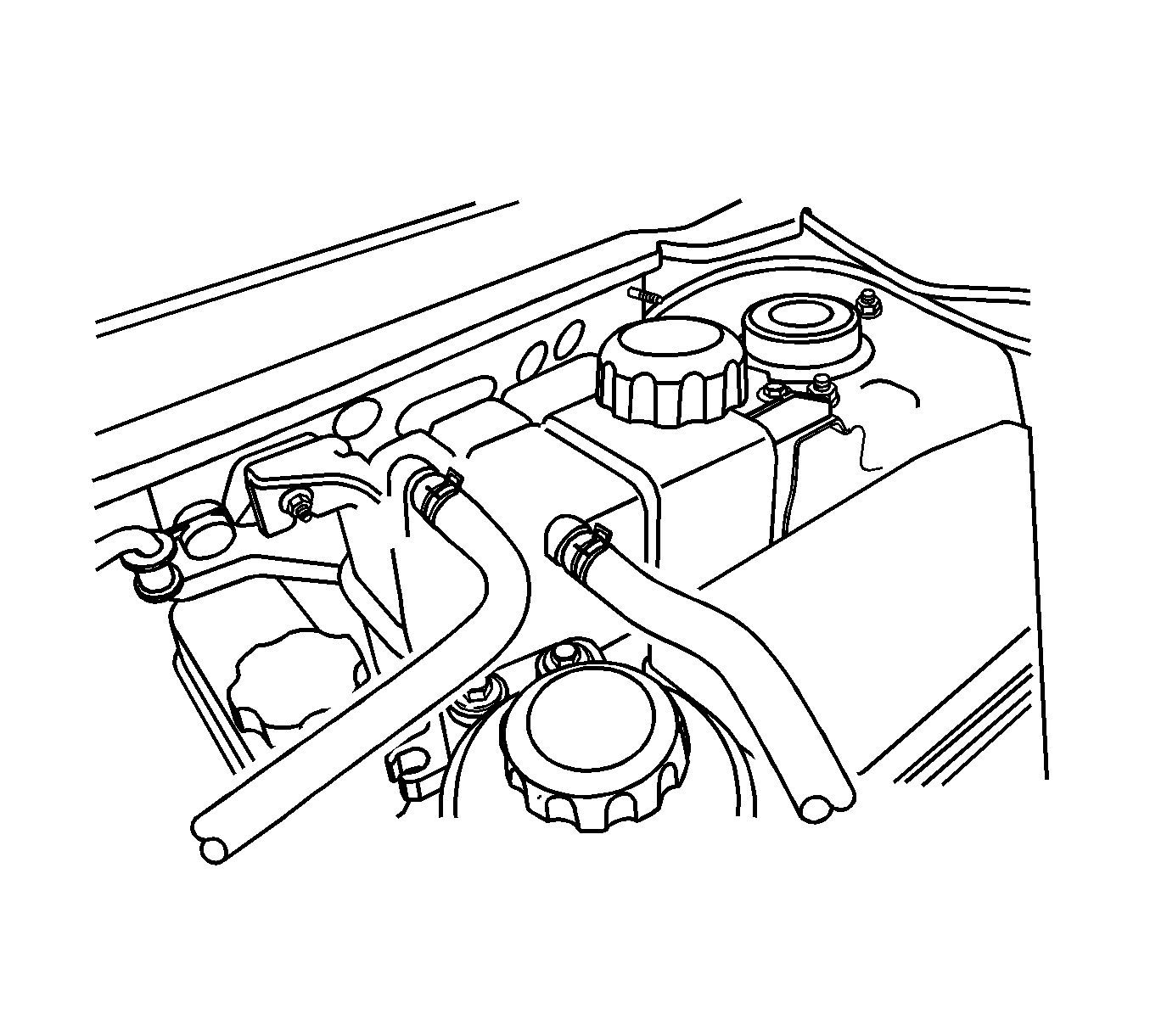For 1990-2009 cars only
- Place a pan below the vehicle to catch the draining coolant.
- Remove the surge tank cap.
- Unplug the drain cock.
- Catch the escaping fluid in a drain pan.
- Remove all sludge and dirt from inside of the surge tank. Refer to Radiator Surge Tank Replacement .
- Plug the drain cock.
- Add the clean water to the surge tank.
- Fill the tank slowly so that the upper reservoir hose remains above the water line. This allows the air inside the cooling system to escape.
- Start the engine.
- Run the engine until the thermostat opens. You can tell the thermostat is open when both radiator hoses are hot to the touch.
- Stop the engine.
- Repeat steps 1 through 9 until the drained water is clear and free of coolant and rust.
- Fill the cooling system through the surge tank with a mixture of DEX-COOL and water. The mixture must be at least 50% antifreeze, but not more than 60% antifreeze.
- Fill the surge tank to the specified MAX fill mark on the outside of the tank.

Caution: To avoid being burned, do not remove the radiator cap or surge tank cap while the engine is hot. The cooling system will release scalding fluid and steam under pressure if radiator cap or surge tank cap is removed while the engine and radiator are still hot.
Important: Dispose of the used coolant to a used coolant holding tank to be picked up with the used oil for disposal. Never pour the used coolant down the drain.

Important: Never use an antifreeze mixture more concentrated than 60% antifreeze to 40% water. The solution freezing point increases above this concentration.
